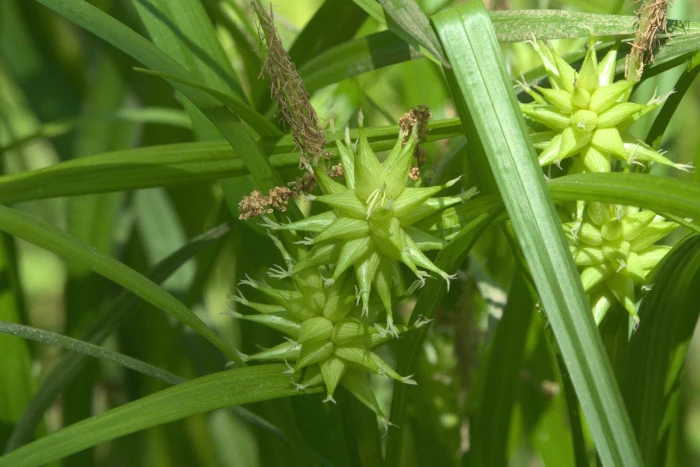Greater Bladder Sedge
(Carex intumescens)
Greater Bladder Sedge (Carex intumescens)
/
/

Robert Webster
CC BY-SA 4.0
Image By:
Robert Webster
Recorded By:
Copyright:
CC BY-SA 4.0
Copyright Notice:
Photo by: Robert Webster | License Type: CC BY-SA 4.0 | License URL: http://creativecommons.org/licenses/by-sa/4.0/ | Rights Holder: Robert Webster | Publisher: iNaturalist | Date Created: 2020-04-10T18:19:03-07:00 |
















































Estimated Native Range
Climate Requirements for Worcester, Massachusetts
| This Plant | Your Site | Plant Suitability for Your Location | ||
|---|---|---|---|---|
| • Precipitation | 15" - 88" | 47" | Aquatic | Aquatic |
| • High Temp. | 66°F - 94°F | 83°F | Your summer temperatures are normal for this plant. | Excellent |
| • Low Temp. | -26°F - 57°F | 14°F | Your winter temperatures are normal for this plant | Excellent |
This plant should grow well at your location with about N inches per year (Y minutes per month) of irrigation.
Summary
Carex intumescens, commonly known as Greater Bladder Sedge, is a deciduous perennial sedge native to wet meadows, marshes, and stream banks in the Eastern United States and Eastern Canada. It typically grows to a height of 1-2 feet (0.3-0.6 meters) and can spread to 4-6 feet (1.2-1.8 meters). This sedge forms dense clumps of bright green, grass-like leaves and is noted for its inflated, bladder-like perigynia (seed cases) that add textural interest to the plant. The flowers are not particularly showy, but the seed heads provide a unique appearance in the late spring and early summer.
Greater Bladder Sedge is valued for its ability to thrive in wet conditions and is often used in rain gardens, wetland restoration projects, and as a ground cover in moist, shady areas. It is also beneficial for erosion control along waterways. While it prefers part shade, it can tolerate full sun if the soil remains consistently moist. This sedge is relatively low maintenance, but it may require division every few years to manage its spread. It is not known for having serious disease or pest problems, but it can become aggressive in ideal growing conditions.CC BY-SA 4.0
Greater Bladder Sedge is valued for its ability to thrive in wet conditions and is often used in rain gardens, wetland restoration projects, and as a ground cover in moist, shady areas. It is also beneficial for erosion control along waterways. While it prefers part shade, it can tolerate full sun if the soil remains consistently moist. This sedge is relatively low maintenance, but it may require division every few years to manage its spread. It is not known for having serious disease or pest problems, but it can become aggressive in ideal growing conditions.CC BY-SA 4.0
Plant Description
- Plant Type: Grass
- Height: 1-2 feet
- Width: 4-6 feet
- Growth Rate: Moderate
- Flower Color: N/A
- Flowering Season: Spring
- Leaf Retention: Deciduous
Growth Requirements
- Sun: Part Shade
- Water: High
- Drainage: Slow, Medium
Common Uses
Bird Garden, Deer Resistant, Groundcover, Low Maintenance
Natural Habitat
native to wet meadows, marshes, and stream banks in the Eastern United States and Eastern Canada
Other Names
Common Names: Bladder Sedge, Shining Bur Sedge, Swollen Sedge, Carex Gonflé, Indianstarr
Scientific Names: Carex intumescens, Carex folliculata, Carex intumescens var. intumescens, Carex intumescens var. fernaldii, Carex intumescens f. ventriosa, Carex folliculata var. major, Carex intumescens f. intumescens
GBIF Accepted Name: Carex intumescens Rudge